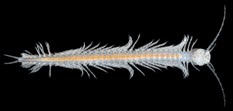Busy February
11/02/10 09:02
Well, in the last month we’ve had at least 3 waves of graduate recruits - for our Interdisciplinary Life Sciences program, the Genetics department, and the School of Ecology - so it has been busy. For those of you who visited, it was great meeting all of you. Strange as it may seem, it is the newest graduate students that make this job easy. You folks bring the enthusiasm and (sometimes crazy) ideas, and we get the chance to work with new people all the time. Of course that means that we have a lot of great students who leave Athens, too, and that’s a bummer, but part of the job. We also got some good news in that an NSF proposal with Jeb Byers and Jamie Pringle is up near the top for funding...I might even have to “friend” NSF on Facebook if they fund us. Right now I’m finishing another NSF proposal, and have finished teaching the Life History/Molecular Pop Gen section of our core evolution course for graduate students, and next week I’ll be traveling to give a talk at UNC-Asheville (also a good excuse to take my mountain bike to the snow-dusted mountains up north!). So, yeah, it has been busy.

But today I actually wanted to give props to my Ph.D. advisor, I left his lab 10 years ago now. It has been a good week or two for Cliff Cunningham, with notable mentions in Science for the collaborative work he has done with Scott France and others on the origins of deep sea corals, and now in Discover magazine where his work to help determine the true phylogeny and ancestral relationships of the arthropods has made big waves! The picture of the xenocarid above represents the closest living relative to the Hexapoda, including insects - so we’re talking about a deep relationship here, appropriate since these blind creatures are found in caves....

But today I actually wanted to give props to my Ph.D. advisor, I left his lab 10 years ago now. It has been a good week or two for Cliff Cunningham, with notable mentions in Science for the collaborative work he has done with Scott France and others on the origins of deep sea corals, and now in Discover magazine where his work to help determine the true phylogeny and ancestral relationships of the arthropods has made big waves! The picture of the xenocarid above represents the closest living relative to the Hexapoda, including insects - so we’re talking about a deep relationship here, appropriate since these blind creatures are found in caves....